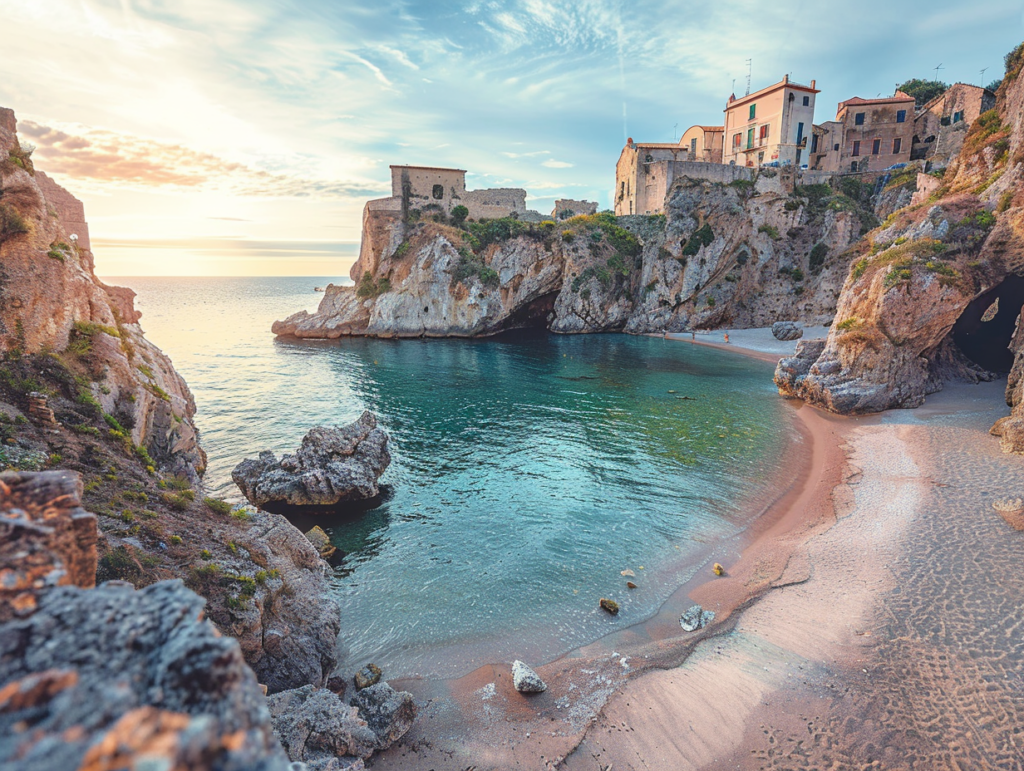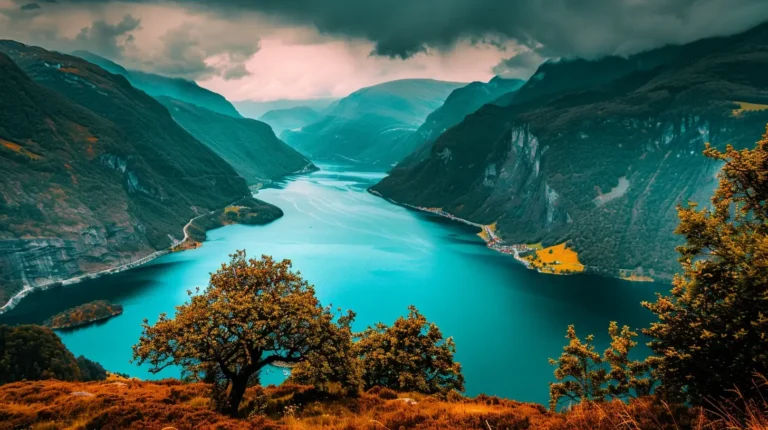Introduction
In today’s world, where environmental conservation is becoming increasingly important, ecotourism offers a way to explore the beauty of our planet while minimizing our ecological footprint. Ecotourism focuses on sustainable travel practices that support local communities, preserve natural habitats, and educate travelers about the environment. In this article, we’ll delve into inspiring ecotourism examples for green travel, showcasing destinations and activities that epitomize the principles of eco-friendly tourism.What is Ecotourism?
Ecotourism is a form of sustainable travel that emphasizes conservation, education, and community involvement. It encourages travelers to explore natural areas responsibly, ensuring that their visits have a positive impact on the environment and local communities.Principles of Ecotourism
Ecotourism is guided by several core principles, including minimizing environmental impact, building environmental and cultural awareness, providing positive experiences for visitors and hosts, and supporting conservation efforts. Minimizing Environmental Impact Ecotourism strives to reduce the negative impact on natural environments. This includes measures like limiting visitor numbers to sensitive areas, promoting the use of eco-friendly transportation, and ensuring that waste is managed sustainably. Building Environmental and Cultural Awareness Education is a key component of ecotourism. Travelers are encouraged to learn about the ecosystems and cultures they visit, fostering respect and understanding. This can be achieved through guided tours, educational programs, and interpretive materials. Providing Positive Experiences Ecotourism aims to provide enjoyable and meaningful experiences for both visitors and local residents. This involves creating opportunities for cultural exchange, supporting local businesses, and ensuring that tourism activities are respectful of local customs and traditions. Supporting Conservation Efforts A significant portion of ecotourism revenue is often directed towards conservation projects. This can include funding for wildlife protection, habitat restoration, and community-led conservation initiatives.Benefits of Ecotourism
Ecotourism offers numerous benefits, such as preserving biodiversity, generating income for local communities, promoting cultural exchange, and fostering a greater appreciation for nature and conservation. Preserving Biodiversity Ecotourism helps protect endangered species and their habitats. By providing economic incentives for conservation, it encourages the preservation of natural areas and wildlife. Generating Income for Local Communities Ecotourism can be a significant source of income for rural and indigenous communities. This income supports local economies, funds community projects, and improves quality of life for residents. Promoting Cultural Exchange Ecotourism facilitates cultural exchange between travelers and local communities. Visitors gain a deeper understanding of different ways of life, while locals can share their traditions and knowledge. Fostering Appreciation for Nature Through immersive experiences in natural settings, ecotourism fosters a greater appreciation for the environment. This can inspire travelers to adopt more sustainable practices in their daily lives.Inspiring Ecotourism Examples for Green Travel
Let’s explore some of the most inspiring ecotourism examples around the world that demonstrate the principles and benefits of sustainable travel.Costa Rica: A Leader in Ecotourism
Costa Rica is renowned for its commitment to sustainability and biodiversity conservation. With over 25% of its land designated as protected areas, Costa Rica offers a wealth of eco-friendly activities.Monteverde Cloud Forest Reserve
The Monteverde Cloud Forest Reserve is a prime example of ecotourism. Visitors can explore lush forests, observe diverse wildlife, and learn about conservation efforts while supporting local communities through eco-friendly tours and accommodations. Monteverde is home to an incredible array of flora and fauna, including over 2,500 plant species, 400 bird species, and numerous mammals. Guided tours through the forest provide insights into the complex ecosystem and highlight the importance of conservation. Visitors can also participate in canopy tours, walking along suspended bridges that offer a unique perspective of the forest’s upper layers.Tortuguero National Park
Tortuguero National Park is famous for its sea turtle conservation efforts. Eco tours here include guided boat trips through the park’s canals, turtle-watching tours, and educational programs about marine conservation. The park’s intricate network of canals and lagoons provides a habitat for a rich diversity of wildlife, including monkeys, jaguars, and over 300 bird species. Turtle-watching tours, particularly during the nesting season, offer a chance to see green sea turtles laying their eggs on the beach. These tours are conducted by trained guides who ensure minimal disturbance to the turtles and educate visitors on the importance of protecting these endangered creatures.Galápagos Islands: A Natural Wonder
The Galápagos Islands are a UNESCO World Heritage site known for their unique wildlife and pristine ecosystems. Strict regulations ensure that tourism is sustainable and that the islands’ biodiversity is preserved.Eco-Friendly Cruises
Eco-friendly cruises in the Galápagos are designed to minimize environmental impact. These cruises follow strict guidelines, including limiting the number of visitors, using eco-friendly materials, and supporting local conservation projects. Operators of these cruises are required to adhere to environmental regulations, such as using biodegradable cleaning products, implementing waste management systems, and reducing energy consumption. These measures help protect the fragile marine and terrestrial ecosystems of the islands.Guided Wildlife Tours
Guided tours led by certified naturalists provide an educational experience while promoting conservation. Visitors can observe unique species such as giant tortoises, marine iguanas, and blue-footed boobies. Naturalist guides are trained in environmental education and conservation practices. They provide in-depth information about the islands’ ecosystems, the behavior of the wildlife, and the ongoing conservation efforts. These tours not only enhance the visitor experience but also raise awareness about the need to protect this unique environment.Norway: Sustainable Fjord Tourism
Norway is a pioneer in sustainable tourism, particularly in its fjord regions. The country’s commitment to preserving its natural landscapes while offering eco-friendly travel experiences is commendable.Geirangerfjord
Geirangerfjord, a UNESCO World Heritage site, is a prime destination for eco-friendly tourism. Visitors can enjoy activities like kayaking, hiking, and electric boat tours that have minimal environmental impact. The fjord’s stunning beauty, characterized by steep cliffs, cascading waterfalls, and deep blue waters, attracts visitors from around the world. Eco-friendly activities such as kayaking and hiking allow travelers to explore the area without harming the environment. Electric boat tours provide a quiet and emission-free way to experience the fjord, reducing the impact on the local ecosystem.Norwegian Scenic Routes
Norway’s scenic routes are designed to promote sustainable tourism. These routes feature eco-friendly infrastructure, such as electric vehicle charging stations and environmentally conscious accommodations. The Norwegian Scenic Routes project includes 18 designated routes that highlight the country’s natural beauty and cultural heritage. Along these routes, travelers can find rest areas with innovative architecture, designed to blend into the landscape and built using sustainable materials. Many of the accommodations along these routes are certified as eco-friendly, offering services that minimize their environmental footprint.Bhutan: High-Value, Low-Impact Tourism
Bhutan has adopted a unique approach to tourism, focusing on high-value, low-impact travel. This strategy ensures that tourism benefits the country’s economy while preserving its cultural and natural heritage.Phobjikha Valley
Phobjikha Valley is a model of sustainable tourism in Bhutan. Known for its black-necked cranes, the valley offers eco-friendly lodges, guided nature walks, and cultural experiences that support local communities. The valley is a wintering ground for the endangered black-necked crane, and conservation efforts have been implemented to protect these birds. Eco-friendly lodges in the valley are built using traditional materials and techniques, providing a comfortable stay while supporting local artisans. Guided nature walks offer insights into the valley’s unique ecosystem and the cultural practices of the local communities.Tiger’s Nest Monastery
Visiting the Tiger’s Nest Monastery involves a trek that not only provides breathtaking views but also promotes sustainable travel. The government limits the number of visitors to preserve the site’s integrity. The monastery, perched on a cliffside, is one of Bhutan’s most iconic landmarks. The trek to the monastery is a challenging but rewarding journey through lush forests and rugged terrain. The government has implemented measures to manage the number of visitors and maintain the trail, ensuring that the site remains pristine and accessible for future generations.Australia: Ecotourism Down Under
Australia is home to diverse ecosystems and innovative ecotourism practices. From the Great Barrier Reef to the Outback, Australia offers a variety of eco-friendly travel experiences.Great Barrier Reef
The Great Barrier Reef is a renowned ecotourism destination. Visitors can participate in sustainable diving and snorkeling tours, reef restoration projects, and educational programs about marine conservation. The reef is one of the most biologically diverse ecosystems on the planet, home to thousands of marine species. Sustainable diving and snorkeling tours are conducted by operators who follow strict environmental guidelines to minimize impact on the reef. These tours often include educational components, teaching visitors about the threats facing the reef and the efforts being made to protect it. Reef restoration projects, such as coral planting, allow visitors to actively contribute to conservation efforts.Daintree Rainforest
The Daintree Rainforest is the world’s oldest tropical rainforest. Eco tours here include guided walks with indigenous guides, wildlife spotting, and stays in eco-lodges that support local conservation efforts. The Daintree is a living museum of ancient plant and animal species. Guided walks with indigenous guides provide a unique perspective on the rainforest’s cultural and natural heritage. These guides share their knowledge of traditional uses of plants and the spiritual significance of the forest. Eco-lodges in the area are designed to have minimal impact on the environment, using sustainable practices in their operations and supporting local conservation initiatives.Kenya: Wildlife and Conservation
Kenya is famous for its wildlife and pioneering conservation efforts. Ecotourism in Kenya focuses on preserving natural habitats and supporting local communities through sustainable practices.Maasai Mara National Reserve
The Maasai Mara National Reserve offers eco-friendly safaris that promote conservation and benefit local Maasai communities. Visitors can stay in eco-camps and participate in wildlife conservation projects. The reserve is one of the most famous wildlife destinations in the world, known for its annual wildebeest migration. Eco-friendly safaris are conducted in ways that minimize disturbance to wildlife, using vehicles that adhere to strict off-road guidelines and employing guides who are trained in conservation practices. Eco-camps in the Maasai Mara are built with sustainable materials and operate on principles that reduce their environmental footprint. These camps also provide employment opportunities for local Maasai people and support community development projects.Samburu National Reserve
Samburu National Reserve is known for its unique wildlife and community-led conservation initiatives. Eco tours here include guided safaris, cultural experiences with the Samburu people, and visits to conservation projects. The reserve is home to species that are not found in many other parts of Kenya, such as the Grevy’s zebra, reticulated giraffe, and Somali ostrich. Guided safaris offer opportunities to see these rare animals while learning about the conservation efforts that protect them. Cultural experiences with the Samburu people, who have lived in harmony with the land for centuries, provide insights into their traditional practices and ways of life. Visitors can also visit conservation projects, such as wildlife sanctuaries and anti-poaching initiatives, to learn about the challenges and successes of protecting Kenya’s wildlife.Best Practices for Eco Tours
When planning eco tours, it’s important to follow best practices to ensure that your travel is sustainable and responsible.Choose Eco-Friendly Accommodations
Select accommodations that prioritize sustainability, such as eco-lodges, green hotels, and community-based tourism initiatives that support local economies and minimize environmental impact. Look for accommodations that have certifications from recognized organizations, such as Green Key, EarthCheck, or Rainforest Alliance. These certifications indicate that the establishment follows sustainable practices in areas such as energy and water conservation, waste management, and community engagement.Support Local Communities
Engage in activities that benefit local communities, such as buying local products, participating in community-led tours, and respecting local customs and traditions. Supporting local businesses helps to ensure that tourism revenue stays within the community and benefits those who live there. This can include dining at locally owned restaurants, purchasing handicrafts from local artisans, and choosing tour operators that are locally owned and operated.Minimize Environmental Impact
Practice Leave No Trace principles by minimizing waste, conserving water and energy, and respecting wildlife and natural habitats. Avoid single-use plastics and opt for reusable items. Travelers can reduce their environmental footprint by making conscious choices, such as using reusable water bottles and bags, reducing energy consumption by turning off lights and air conditioning when not in use, and choosing transportation options with lower emissions. Additionally, it’s important to follow guidelines for interacting with wildlife and natural environments to avoid causing harm.Eco Tourism Destinations to Explore
Here are some additional eco tourism destinations that exemplify sustainable travel practices and offer unique eco-friendly experiences.New Zealand
New Zealand is a leader in ecotourism, with a strong commitment to conservation and sustainable travel. Explore the stunning landscapes of Fiordland National Park, hike the Milford Track, or visit eco-friendly farms and wineries. New Zealand‘s natural beauty is protected by extensive national parks and conservation areas. Fiordland National Park, known for its dramatic fjords and diverse wildlife, offers opportunities for hiking, kayaking, and wildlife spotting. The Milford Track, one of the country’s most famous hikes, takes visitors through lush forests, past waterfalls, and along pristine lakes. Eco-friendly farms and wineries provide insights into sustainable agricultural practices and offer tastings of organic produce and wines.Iceland
Iceland is known for its dramatic landscapes and eco-friendly tourism practices. Discover geothermal hot springs, hike on glaciers, and explore the country’s unique volcanic landscapes while supporting sustainable tourism initiatives. Iceland’s commitment to sustainability is evident in its use of renewable energy, with the majority of the country’s energy coming from geothermal and hydroelectric sources. Visitors can experience the country’s geothermal wonders at sites like the Blue Lagoon and Myvatn Nature Baths. Glacier hikes offer an up-close look at Iceland’s icy landscapes, while guided tours provide education on the effects of climate change. The country’s volcanic landscapes, such as those found in the Vatnajökull National Park, offer unique opportunities for exploration and adventure.Madagascar
Madagascar is a biodiversity hotspot with unique flora and fauna. Eco tours in Madagascar include guided wildlife tours, visits to national parks, and stays in eco-lodges that support local conservation efforts. Madagascar’s isolation has resulted in a high level of endemic species, meaning many of its plants and animals are found nowhere else on Earth. Eco tours provide opportunities to see lemurs, chameleons, and other unique wildlife in their natural habitats. National parks, such as Andasibe-Mantadia and Ranomafana, offer guided tours led by knowledgeable local guides. Eco-lodges in Madagascar are designed to minimize environmental impact and support conservation efforts through sustainable practices and community involvement.Ecuador
Ecuador offers diverse eco tourism experiences, from the Amazon Rainforest to the Andes Mountains. Participate in community-based tourism projects, explore cloud forests, and visit sustainable coffee farms. The Amazon Rainforest, one of the most biodiverse regions on the planet, offers eco tours that include guided hikes, canoe trips, and wildlife spotting. Community-based tourism projects in the Amazon provide opportunities to learn about indigenous cultures and support local conservation efforts. The Andes Mountains offer stunning landscapes and unique biodiversity, with eco tours that explore cloud forests, high-altitude paramos, and traditional farming practices. Sustainable coffee farms in the region offer tours that showcase organic farming methods and provide tastings of locally grown coffee.Travel Sustainable Level Meaning
Understanding the meaning of travel sustainable levels can help you make informed choices when planning your eco-friendly trips.Travel Sustainable Level 1
Travel Sustainable Level 1 indicates basic sustainable practices, such as reducing waste and energy consumption. Accommodations and tour operators at this level have implemented some sustainable measures but may not have comprehensive sustainability policies in place. Level 1 accommodations and operators often focus on simple but effective practices, such as using energy-efficient lighting, reducing water usage, and promoting recycling. While these measures are important, travelers looking for more advanced sustainability practices may seek higher-level certifications.Advancing to Higher Levels
To advance to higher levels of sustainability, businesses must adopt more rigorous practices, such as renewable energy use, waste reduction programs, community engagement, and biodiversity conservation efforts. Higher-level certifications, such as Travel Sustainable Levels 2 and 3, require businesses to implement comprehensive sustainability strategies. This can include installing solar panels, developing rainwater harvesting systems, supporting local conservation projects, and engaging with communities to ensure tourism benefits are shared equitably. By choosing higher-level certified businesses, travelers can ensure their trips have a more positive impact on the environment and local communities.FAQs
What is ecotourism? Ecotourism is a form of sustainable travel that focuses on conservation, education, and community involvement. It encourages responsible exploration of natural areas to minimize environmental impact and support local communities. What are some inspiring ecotourism destinations? Inspiring ecotourism destinations include Costa Rica, the Galápagos Islands, Norway, Bhutan, Australia, and Kenya. These places offer unique eco-friendly experiences and emphasize sustainability and conservation. How can I ensure my travel is eco-friendly? To ensure eco-friendly travel, choose eco-friendly accommodations, support local communities, minimize environmental impact by practicing Leave No Trace principles, and engage in activities that promote conservation. What is the travel sustainable level meaning? Travel sustainable levels indicate the degree of sustainability practices adopted by accommodations and tour operators. Level 1 signifies basic sustainable measures, while higher levels reflect more comprehensive and rigorous sustainability efforts. Why is ecotourism important? Ecotourism is important because it promotes environmental conservation, supports local economies, encourages cultural exchange, and fosters a greater appreciation for nature and sustainable practices among travelers. How can I support local communities through ecotourism? Support local communities by participating in community-led tours, buying local products, staying in accommodations that prioritize community benefits, and respecting local customs and traditions.Conclusion
Inspiring ecotourism examples for green travel showcase the potential for sustainable and responsible tourism. By choosing eco-friendly destinations and practices, travelers can enjoy enriching experiences while contributing to environmental conservation and supporting local communities. Whether exploring the lush rainforests of Costa Rica, the pristine waters of the Galápagos, or the cultural heritage of Bhutan, ecotourism offers a way to connect with nature and make a positive impact on the world.


